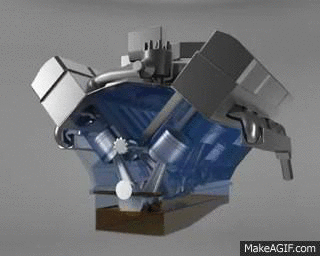The various methods adopted for lubrication Of I.C Engines are :
i) Petrol lubrication or mist lubrication system,
ii) Wet sump system, and
iii) Dry sump system.
I) Petrol or Mist Lubrication System :
It is simplest of all types of lubrication. This method is used in light vehicles such as motor cycles and scooters. About 3 to 6 % of lubricating oil is mixed with petrol in fuel tank. Here, there is no separate sump and pump. The oil mixing with petrol acts as lubricant.
The disadvantage of this method is, if the engine remains idle for the long time, the oil will get separated and cause clogging of fuel passage in carburetor there by resulting in starting trouble. If the quantity of mixing oil is less, lubricating is insufficient which causes damage to the engine. If the quantity of oil is more, it will release more carbon deposits in the cylinder. So, the engine will give dark smoke.
II) Wet Sump System :
In this method, the lubrication oil is stored in the oil sump. From the oil sump, the oil is supplied to various parts of the engine. This system may be further classified as :
c) Pressure Lubrication System
d) Semi - pressure Lubrication System
III) Dry Sump Lubrication System :
The lubricating oil stored in the oil sump is called wet sump system. But the system in which the lubricating oil is not kept in the oil sump is known as dry sump system. In this system, oil is carried in a separate tank and fed to the engine.
The oil which falls into the oil sump after lubrication is sent back to oil tank by a separate delivery pump. Thus the system consists of two pumps. One pump is used to feed the oil. The other pump is used to deliver the oil to the oil tank. This system is used in aircrafts.
The main advantage of this system is that there is no chance of break down in the oil supply during up and down movement of the vehicle.


Comments
Post a Comment